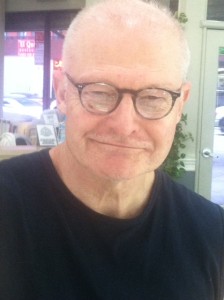
The Editor’s Letter: Gil Tunnell, PhD
Introduction to Transformance: Benjamin Lipton
AEDP for Couples: David Mars
Resiliency-Focused Couple Therapy: A Multidisciplinary Model: David E. Greenan
Facilitating Transformance for Couples: Gil Tunnell
Editor’s Letter
By Gil Tunnell, PhD

After months of finding my “sea legs” as the new editor of Transformance: The AEDP Journal, I am very excited to launch Volume 5. I thank the inaugural editors of Transformance, Natasha Prenn and Kari Gleiser, for their vision and enthusiasm in beginning this new venture, their creativity in soliciting manuscripts, their diligence in editing and producing the first four volumes, and their help in getting me up to speed.
I also want to thank Carrie Ruggeri for leading and facilitating AEDP listserv discussions of previous articles, and I trust she will continue to provide a platform for discussing these and future articles. Finally, I thank the founder of AEDP, Diana Fosha, for her confidence in naming me editor.
Volume 5, Issue 1 is devoted entirely to applying AEDP to couple therapy, a topic near and dear to me. The first two articles by David Mars and David Greenan describe how they have expanded AEDP beyond an individual model of treatment and, in David Mars’ case, beyond the consultation room and into a healing community. The third article describes how I’ve integrated AEDP into my work with couples. Benjamin Lipton provides an in-depth introduction to this issue, with an insightful, succinct synopsis comparing the three approaches.
Future issues will include three articles that integrate other treatment modalities with AEDP: Hilary Jacobs Hendel is writing on the use of touch in AEDP; Judy Silvan on integrating bioenergetics into AEDP; Jonathan Peretz on how he incorporated AEDP into a very brief five-session treatment. David Mars will write on his community healing model for couples. There will be two separate articles on working with pathogenic affects by Denise Clay, and Senior Faculty member Jerry Lamagna (using his intra-relational AEDP model).
Finally, as AEDP is now rapidly expanding around the world, articles are planned on what happens when AEDP is introduced in other cultures: What remains constant when we leave the United States, and what adaptations, if any, are made as cultural differences are taken into account?
As the new editor, I welcome full-length submissions to the journal (please see submission guidelines and APA-style requirements on this web page), as well as shorter articles, poems and book reviews. Feel free to contact me at giltunnell@verizon.net to discuss your ideas about contributing to the journal.
Enjoy!
Gil
Introduction to Transformance
Benjamin Lipton
s we stand together at the horizon of the second decade of AEDP, the view in all directions is quite stunning. Behind us, the many milestones of our model and our community fill the landscape from AEDP’s beginning to today. Fueled by a commitment to emergence, rigor and authenticity, the development of AEDP theory and technique during its first decade has brought dynamic, new theoretical understanding and increasingly effective and nuanced clinical strategies to the field of individual psychotherapy.
read more>>>
AEDP for Couples: Transforming Potential Divorce into Falling Freshly in Love in the Thirtieth Year of Marriage
David Mars
Abstract: This paper shows the pre to post-treatment journey of a couple who came through an accelerated treatment process of eleven sessions of AEDP for Couples. In the course of these sessions, they moved from the brink of divorce to freshly falling in love with each other after thirty years of marriage. Key interventions of the AEDP for Couples method are shown for establishing and deepening safety within the couple dyad.
Resiliency-Focused Couple Therapy: A Multidisciplinary Model
David E. Greenan
Abstract: With a focus on resiliency, this article presents a three-phase systemic treatment model for working with high conflict couples. Initially informed by the work of Salvador Minuchin, the author uses joining and enactments with the couple to identify circular behavioral problems that maintain homeostasis. Using the teachings of Sakyong Mipham Rinpoche, the therapist in the middle phase of treatment introduces mindfulness practices to quiet the central nervous system, and then incorporates aspects of John Gottman’s communication exercises for skill-building and resolution of conflict
Facilitating Transformance for Couples:
A Comparison between Structural Family Therapy and AEDP
Gil Tunnell
Abstract. The author compares the similarities and differences between Structural Family Therapy and Accelerated Experiential Dynamic Psychology applied to couples, and then discusses how he incorporates principles of both models in his work with couples. Bowlby’s attachment theory is described, with an emphasis on the importance of balancing both the need for connection and the need for autonomy with couples.
